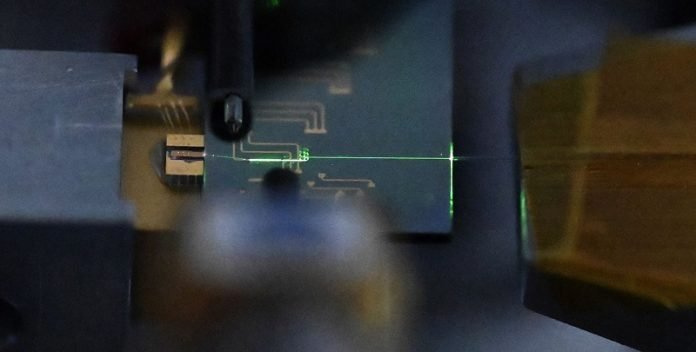
Lasers are a lot more than just fancy light shows or tools for scanning your groceries.
They play a crucial role in fields like telecommunications, computing, and various scientific research areas, including biology, chemistry, and physics.
But there’s a special kind of laser that’s making waves in the scientific community – the ultrafast mode-locked laser.
These aren’t your average lasers; they emit pulses incredibly briefly, lasting only a trillionth of a second!
Why is this important?
These super short pulses let scientists observe things that happen incredibly quickly, like how molecules bond during a chemical reaction or how electrons move in materials.
They’re also great for imaging because they’re really intense but don’t damage the samples, like delicate biological tissues.
Recently, a team from Caltech, led by assistant professor Alireza Marandi, has taken a huge step in laser technology.
They’ve developed a way to build these ultrafast lasers on tiny chips, using components that are nanoscale (a nanometer is one-billionth of a meter).
This means these lasers can now be integrated into light-based circuits, similar to the integrated circuits in modern electronics. Marandi is excited about this because it’s not just about making these lasers smaller. The real breakthrough is combining them with other components on a chip, bringing the power of ultrafast science from large-scale labs to tiny, millimeter-scale chips.
These ultrafast lasers are so important that the 2023 Nobel Prize in Physics was awarded to scientists who developed lasers producing even shorter pulses, lasting a quintillionth of a second. But these traditional lasers are huge and very expensive, sometimes costing up to $10 million. Marandi’s team is working to bring this technology to chips that are much smaller and cheaper, making ultrafast photonic technologies more accessible and widely usable.
The key to their laser is a synthetic salt called lithium niobate, which has special optical and electrical properties. This allows them to control and shape the laser pulses with an external radio-frequency electrical signal, a technique known as active mode-locking with intracavity phase modulation. This approach, once deemed unsuitable for traditional lasers, has found its perfect match in Marandi’s nanophotonic platform.
Qiushi Guo, the paper’s first author and a former postdoctoral scholar in Marandi’s lab, highlights that beyond being compact, their laser has some exciting properties. They can precisely control the frequency of the output pulses, which is essential for developing chip-scale frequency comb sources. These are important for frequency metrology and precision sensing.
Marandi and his team aren’t stopping here. They aim to improve this technology further, targeting even shorter pulse durations and higher peak powers. Their goal is to reach 50 femtoseconds, a hundred times shorter than their current device’s 4.8-picosecond pulses.
The research, detailed in their paper “Ultrafast mode-locked laser in nanophotonic lithium niobite,” was published in the November 9 issue of the journal Science.
This breakthrough could mean a big leap forward in making advanced scientific research more accessible and integrated into everyday technology.



